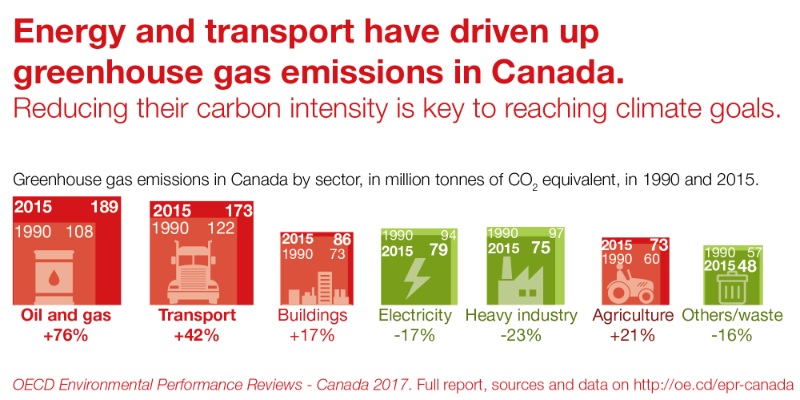Environment

OECD Environmental Performance Reviews: Canada 2017
Canada, the world's second largest country by area, has abundant natural resources.
Its vast territory includes large tracts of undisturbed wilderness. However, urbanisation
and agriculture are putting pressure on the natural asset base. Since 2000, Canada
has made progress in decoupling economic growth from air pollution, energy consumption
and GHG emissions, but it remains one of the most energy- and emissions-intensive
economies in the OECD. Further progress is needed to transition to a green, low-carbon
economy.
This is the third Environmental Performance Review of Canada. It evaluates progress
towards sustainable development and green growth, with special features on climate
change mitigation and urban wastewater management.
Published on December 19, 2017Also available in: French
In series:OECD Environmental Performance Reviewsview more titles
TABLE OF CONTENTS
| Preface | |
| Foreword | |
| Reader's guide | |
| Abbreviations and acronyms | |
| Basic statistics of Canada (2015 or latest available year) | |
| Executive summary | |
| Assessment and recommendations | |
Powered by OECD iLibrary
